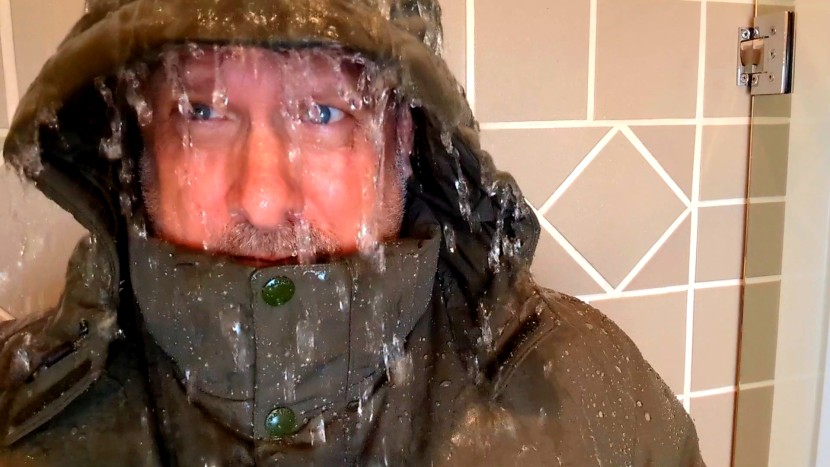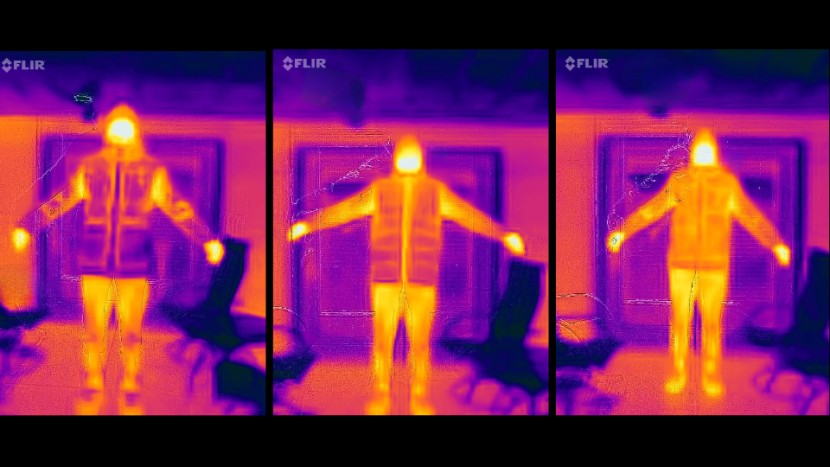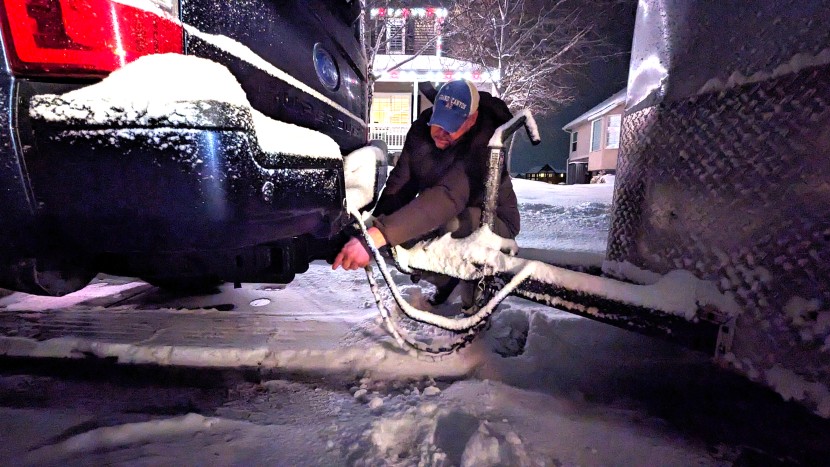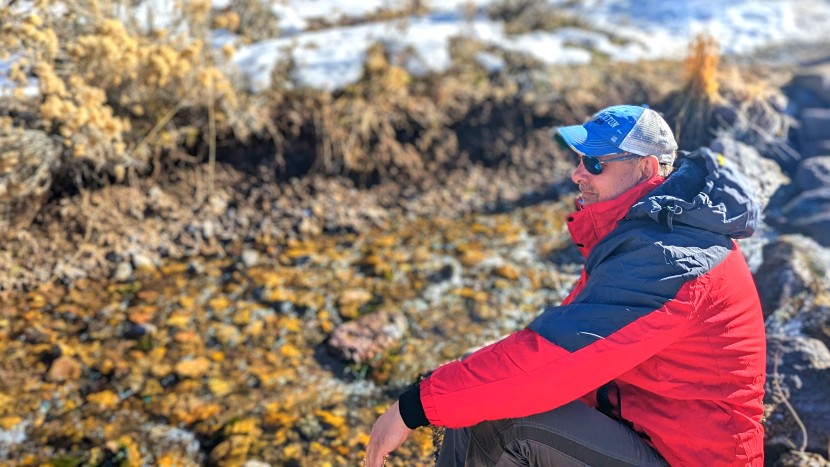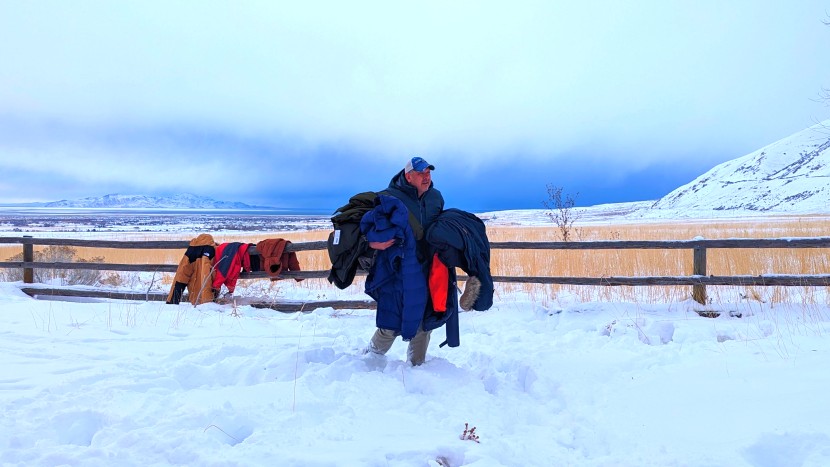Testing these men's winter jackets requires cold temperatures, wind, snow, and rainy weather. We chased down these ideal conditions in Utah, Wyoming, California, and New York. We also visited Finland, Estonia, Sweden, and Norway in the dead of winter, just to see how a few of our top-performing jackets would fare in serious cold. During our months of testing, we endured temperatures below zero, whiteout conditions, and every type of precipitation, from rain to heavy snow to light powder. During our adventures, we tested and scored each jacket against five key metrics: Warmth, Weather Resistance, Comfort, Versatility and Style, and Construction Quality. With our findings, we hope to help you make the best decision on your new piece of winter gear.
Warmth
Warmth is the most important feature of any winter jacket. We conducted many of our side-by-side warmth tests on chilly winter nights, when temps were at their coldest, a task that not every type of jacket can handle. Our two flagship warmth tests were aimed at comparing each jacket side by side to see which could produce the greatest amount of warmth within a given time. First, we used a FLIR Thermal Imaging Camera to capture front and back images of each jacket. We did this on a cold January evening when temps were hovering at just above 20°F. The lighter colors in the images show the areas where heat is being lost the fastest, while darker colors denote the areas of each coat where heat is being retained.
During our second warmth test, we fastened a portable Bluetooth thermometer to our chest and armpit, zipped up, and basically stood in place for 20 minutes. We then recorded the maximum temperature reading achieved. Our warmest coats exceeded 80°F, while our lowest performers barely eked about 70°F. Each jacket was tested on the same night when the outside temperature was 20°F.
In addition to our thermometer readings, we also collected mountains of experiential data based on hundreds of hours of wear time. We wore each jacket repeatedly in all kinds of winter weather. We shoveled snow, ran errands, walked the city, caught a game or movie, went sledding, skiing, hiking, camping, and much more — all to get a good feel of how each jacket performs in a variety of settings and weather. Then, we recorded our experiences. In short, we spent a lot of time outside.
Weather Resistance
Testing for the weather resistance metric included researching and noting each jacket's protective features, including waterproof membranes, storm flaps, cuff straps, drawstring hems, water-resistant zippers, fur-lined hoods, and more. Our two key weather tests focused on water and wind. To double-check manufacturer claims, we hopped in the shower, drenched each jacket for three minutes, and then checked for leaks or weak spots. Some jackets didn't fare so well, while others performed almost as well as a traditional rain jacket. For comparability, some of our wind tests consist of a chilly winter day and a high-powered leaf blower. Additionally, whenever possible, we take advantage of winter windstorms and spend as much time taking in the breeze as we can. Specifically, we wear each jacket for five minutes in the wind and record any weak spots in the design that allow chilly wind to sneak its way in.
Comfort
Throughout our testing period, we noted how jackets felt overall and how they fit in important areas like the shoulders, hood, and sleeves. We compared interior and exterior fabrics for friction and smoothness. We passed the jackets around and asked testers, friends, and family which they would prefer to wear for multiple winters. We interviewed various testers with different body shapes to see which jackets fit which body types.
Versatility and Style
Style is the most subjective of our metrics, as everyone has different tastes. As such, our ratings in this metric might not reflect your style. In general, we awarded points for jackets for their overall fit and appearance. We favored jackets that looked sharp yet could blend into a crowd if needed. We wore each jacket around towns and cities and interviewed bystanders about what they thought of each jacket. We used a wide variety of testers to ensure that we got opinions from people with different styles. After recording our findings, we then took a look at each jacket's versatility. Specifically, we noted each jacket's strengths and tried to envision how each could be used. Some jackets are strictly cold-weather gear, while others are perfect for recreation. Some may be better suited for day-to-day use, and some perform well in multiple settings.
Construction Quality
Winter jackets are supposed to protect us when the weather takes a turn for the worst. The last thing we need is for our jackets to fail or fall apart when we need warmth and weather protection the most. We looked at the durability of the outer shell, insulation, and zippers and then tested our hypothesis with harsh testing that pushed the jackets to their limits. We scrubbed the shell fabric to get the DWR finish to wear off, and we intentionally zipped the inner jacket fabric into the zippers to see how it held up. We examined the seams and recorded the number of stitches per linear inch, and then aggressively scratched the shell and liner of each coat with the sharp end of a straightened paperclip.
Conclusion
All of our testing was hands-on, and each jacket was tested and compared side by side. Many of our tests were lengthy, often grueling, and bone-chilling. However, we enjoyed putting each of these winter jackets to the test in order to give a clearer picture of which one is best for you.

